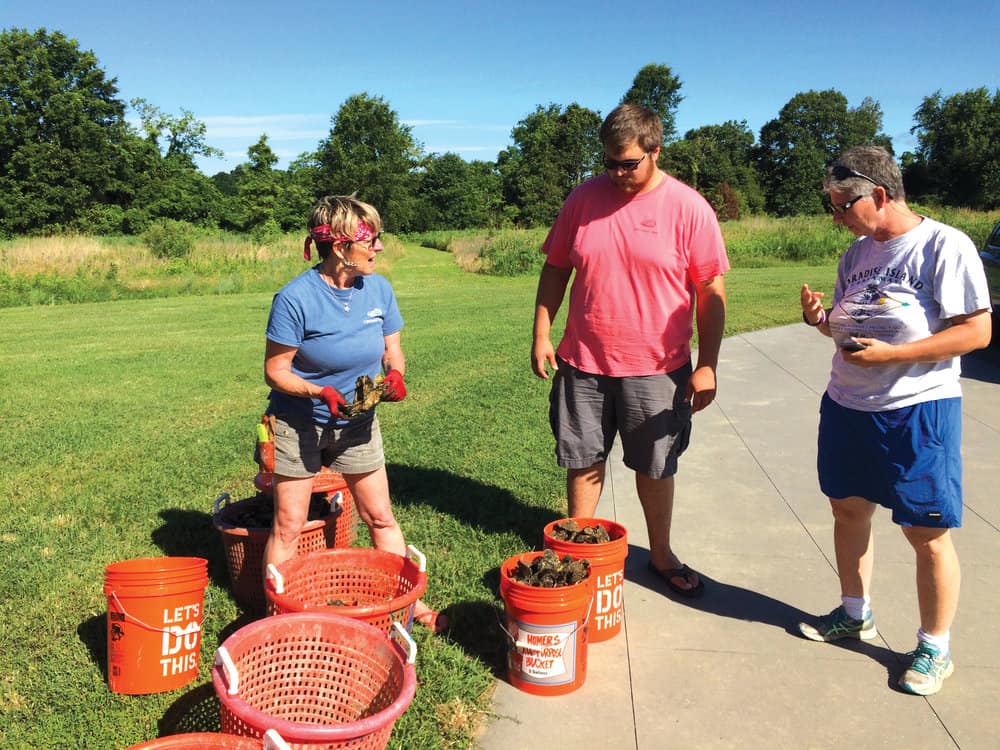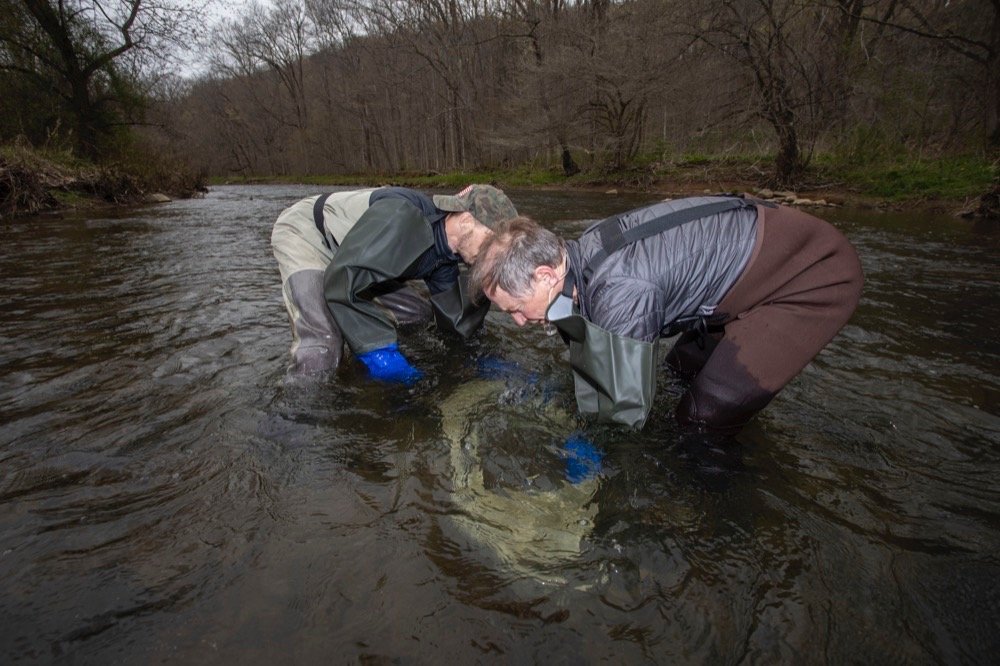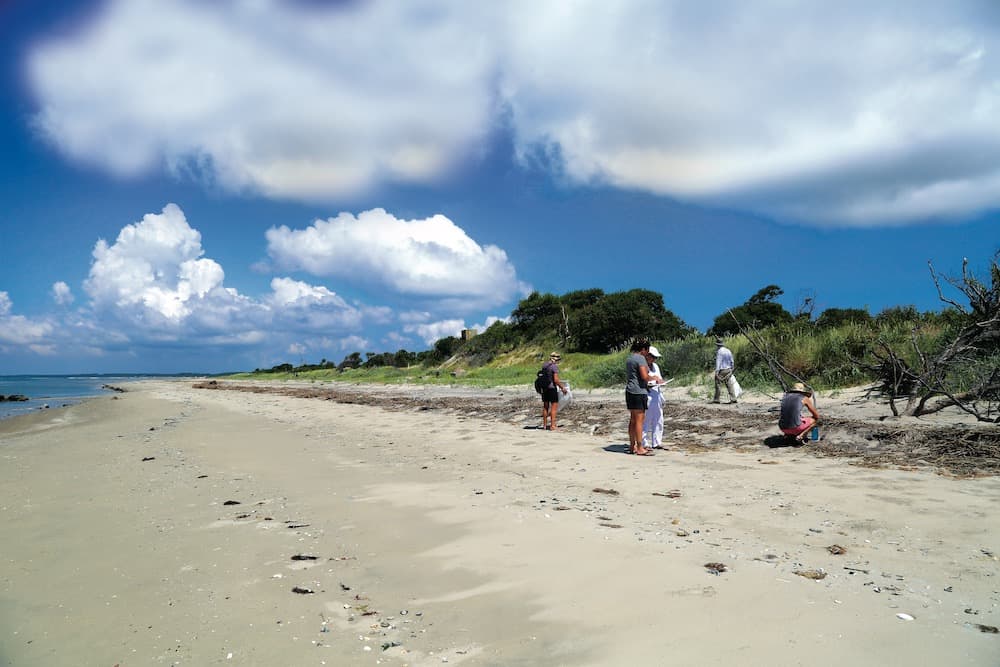Raising up the next generation of shellfish
It is nine o’clock on a Saturday morning, and I am staring somewhat dubiously at a metal cage with a few dozen oyster shells at the bottom. But looks can be deceiving. Those shells are home to between 1,000-2,000 spat (oyster babies), and I am here to learn how to grow them to adulthood. To be honest, the prospect seems a little daunting, and I’m not the only one feeling apprehensive.
Jackie Shannon, the instructor for Chesapeake Bay Foundation’s Oyster Gardening Seminar, assures our class of about twenty potential oyster farmers that growing spat-on-shell into mature bivalves isn’t hard.
“It’s one step above taking care of a pet rock,” she jokes.
“I killed my pet rock,” a man in the back calls out amid laughter.
She’s right, though—it doesn’t sound difficult. Anyone with access to water a foot deep with at least mild salinity (a minimum three parts-per-thousand) can do it, and the main labor involved is cleaning the cages, which means shaking them once every week or two or hosing them off if they become clogged with mud or other sea life. The only other effort involved is removing small crabs that swim inside the cage and molt, effectively trapping them with the spat.
“If you don’t take them out, at the end of the season you’ll have one big happy crab and hundreds of dead oysters,” Shannon explains. “That’s not the outcome we’re hoping for.”
The purpose of raising these oysters is simple. Crassostrea virginica is a living water treatment plant, filtering up to 50 gallons a day. The spat leaving here today will eventually return, to be placed on sanctuary reefs throughout the Bay area. In addition to improving water quality, the reefs created by these shellfish also serve as habitat for other organisms. These are the goals that have drawn all of us here. For John Akers and Kathleen Stanley of Kinsale, it started with a desire to see clearer water in their creek off the Yeacomico River. For Liza Gold and Jeff Nyden on Bull Creek, it was the chance to make a difference in the health of the Bay.
“Oyster gardening is a really neat idea for giving back to the environment, plus you are supporting the Chesapeake Bay Foundation,” says Liza. “It’s a win-win situation.”
Her optimism is shared by the experienced gardeners I meet before the workshop begins. They are here as part of the annual Oyster Roundup, when mature oysters are returned to CBF. Volunteer Bonnie Kertsa “oohs” and “ahhs” enthusiastically as each new bushel basket arrives.
“These look really good!” she exclaims, pointing out the new spat on the clumps of year-old oysters. “You’ve done a great job!”
John and Mel Clarke beam with pride. They are proof that growing oysters is not a huge time commitment. The couple grew theirs living part- time at their second home on White House Creek.
“We shake them as soon as we get there, and we shake them before we leave,” John explains.
This was their third year, and already they are seeing a benefit. There are now oysters visible in the water all around their dock, a fact they attribute to spat from the oysters they have raised for CBF. Shannon points out that this hasn’t been a subject of study yet, but she notes that round-ups usually take place every 13 months, giving the farmed oysters a chance to reproduce. Since the spat spend the first 18 to 21 days of life swimming around until they have developed enough of a shell to adhere to a hard surface, it is likely that at least some of them will end up as permanent residents. In addition, when feasible, the foundation tries to return the farmed oysters close to the water where they were grown. That is something John Clarke appreciates.
“We like to visit our babies,” he says with a smile.
In addition to supporting Bay clean-up efforts, oyster gardener Liz Worsham points out that going down to the dock and cleaning the cages puts her in touch with the variety of creatures that live in the waters of Tipers Creek.
“So often we sit in a restaurant and our only attachment to the water is seeing the oysters the waiter brings to the table,” she says.
It is a good point. We never quite understand the vagaries of nature and the work that goes into producing an ear of corn until we try to grow our own vegetables. Perhaps a less obvious benefit of oyster gardening is an appreciation for the life beneath the surface of our waters and a recognition of the effort it will take to make it sustainable for future generations.
It is certainly food for thought.




